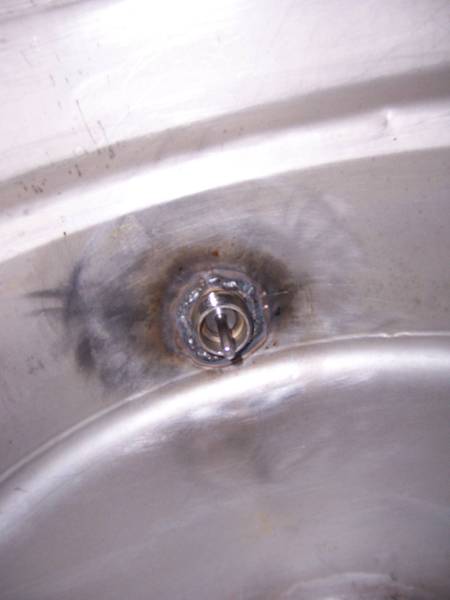Thanks for the help. I know nothing about welding so when you say re-passivate its over my head. I take it sugaring is the raised welded area. I could get a hold of a stainless brush, not sure what BFK brush is? I've been wanting a dremel and this might just be the excuse to buy one

No worries, let me expand... You are really looking at two issues, oxidation at the weld and sugaring.
Stainless steel is stainless because of the chromium in the alloy. When exposed to oxygen, it forms a layer of chromium oxide which protects the metal from rust and is super hard. It's just a few microns thick but that's all it needs. It forms nearly instantly, so if it's scratched or scrubbed off, it comes right back. The formation of this layer is called passivation.
When SS is heated, the chromium is driven off a little deeper, hence the blue, gold and straw colors around the welds. I meant to say BKF; Bar Keepers Friend. It is a cleanser you can get at the grocery store or even Home Depot. It contains Oxalic acid and with a little elbow grease it will remove the discolored oxidation and restore the chromium surface, allowing it to repassivate and preventing it from rusting.
If SS is superheated to molten in the presence of oxygen, it basically burns, the chromium is completely driven off and when it cools it forms that nasty crystalline black structure that looks like black sugar piled on the metal; hence the term 'sugaring'. It is very porous, sharp, hard to clean and will rust for sure. That's why the best way to weld SS for a brewery application is to "back-gas" or "purge" the back side of the weld. The sugaring will not form in an argon atmosphere but back-gassing is not required for the 99% of all other welding and so most welders aren't setup to do it. This isn't a knock on the welder, it's just not something they usually need to do. The sugaring cannot be remove with BKF and scrubbing and needs to be ground or sanded off.
In a fermenter this would clearly be unacceptable but on the hot side of the brewery you could leave those welds just like they are and it wouldn't be a big deal: they just have to seal. The only downside is you'll be chasing rust and they'll be hard to clean. If you take the time to remove the sugaring and scrub all the other oxides off with BKF, those welds will give you years of relatively maintenance-free service.

















